Winter is an etching, spring a water color, summer an oil painting, and autumn a mosaic of them all.”
—Stanley Horowitz
From Fall to Winter. On October 29, I awoke to a thermometer still going down, down, down. By 8 a.m., its 22° and going up again. Gunter’s a bigger wimp than I am. He convinces me to go to the mailbox to pick up yesterday’s mail. Parka zipped all the way to my chin, I venture out. There’s little moisture in the air, so the patio that my son Jeff has emptied of furniture is not covered with frost. Still frozen, plants stand crisp, lifeless sentinels along the driveway. I walk past the trumpet vine, still covered with wine-colored blooms because I’d protected with bedsheets. I snipped off a few blooms to put into a bud vase, aware that soon their end will come. They are tropical, so they won’t return. For annuals, the first frost is a symbol of going from life to death. For perennials, it is time for dormancy. But, as Alan Armitage said, “Gardening simply does not allow one to be old, because so many hopes and dreams are yet to be realized.” That day, I set up a file labeled 2024 Garden.
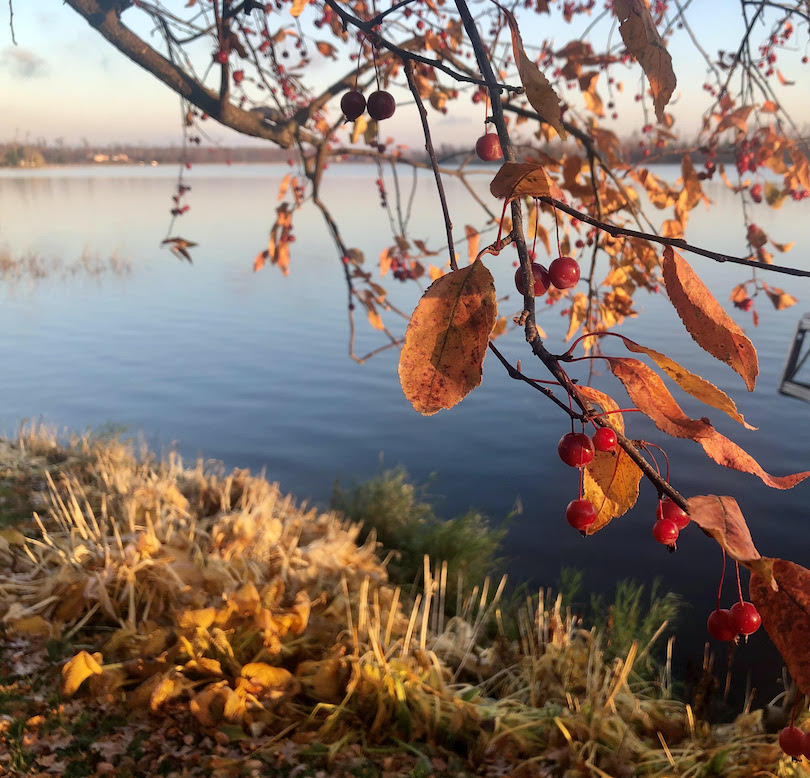
Changes have been slow and subtle this autumn of 2023 because of the mild November we’ve had. In fact, meteorologists had been forecasting the first November in Wisconsin without snow—breaking a 57-year record. That was especially surprising because the previous winter of 2022-2023 was the wettest on record in Wisconsin. The snowless streak ended, however, on November 25, the day after Thanksgiving.
The Gathering of the Flocks. On October 30, Jeff’s last day at Northern Bliss before heading back to Texas, was a cause for celebration. Not because he had finally finished the lengthy fall chores, but because there was commotion on the lake that didn’t end until he left for the MSP airport. Gunter and I insisted that it was a gathering of the flocks for the sole purpose of seeing him off.
I awoke to a large flock of migrant Canada geese honking as they congregated at the southern tip of White Ash Lake. As we breakfasted at the picture window overlooking the lake, we watched our trumpeter swans with their pair of gray-feathered, immature offspring appear near shore where the dock was. They allowed two other trumpeter swans to join them. (Perhaps they were related.) At the middle of the lake, a flock of eight mallard ducks turned and headed toward our shoreline. Before long, the lake filled with more geese and ducks—hundreds of them—all joining the congregation. The North Lake and Apple River must have emptied out! They stayed for a few hours, loosening the lake bottom with their webbed feet, some diving, tail feathers up, to devour assorted “salads” at the bottom. I’ve never seen so many headstands performed in unison. Gunter teased Jeff, “Are they showing off for you?”
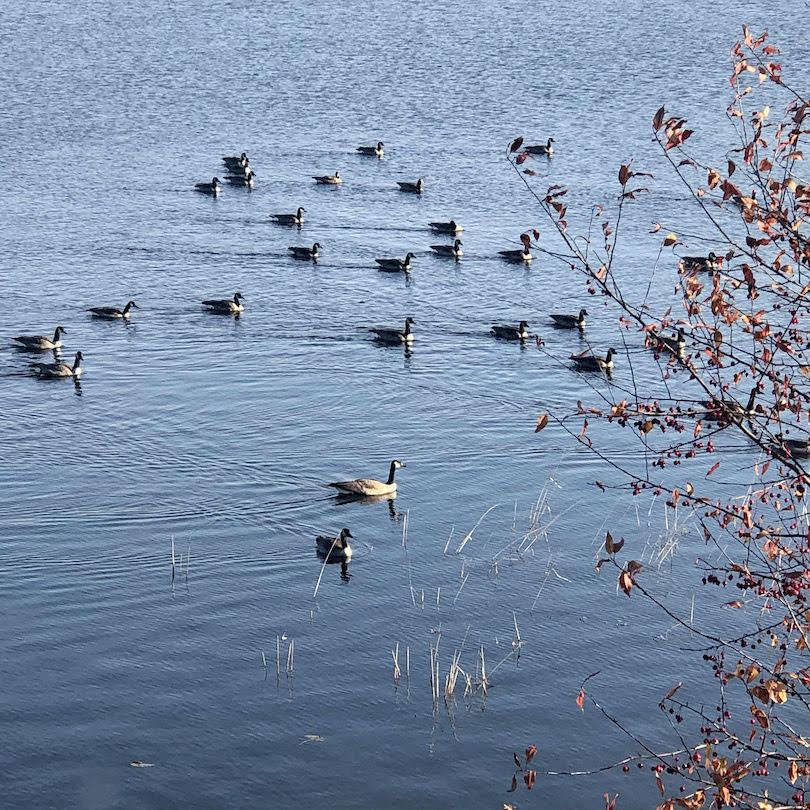
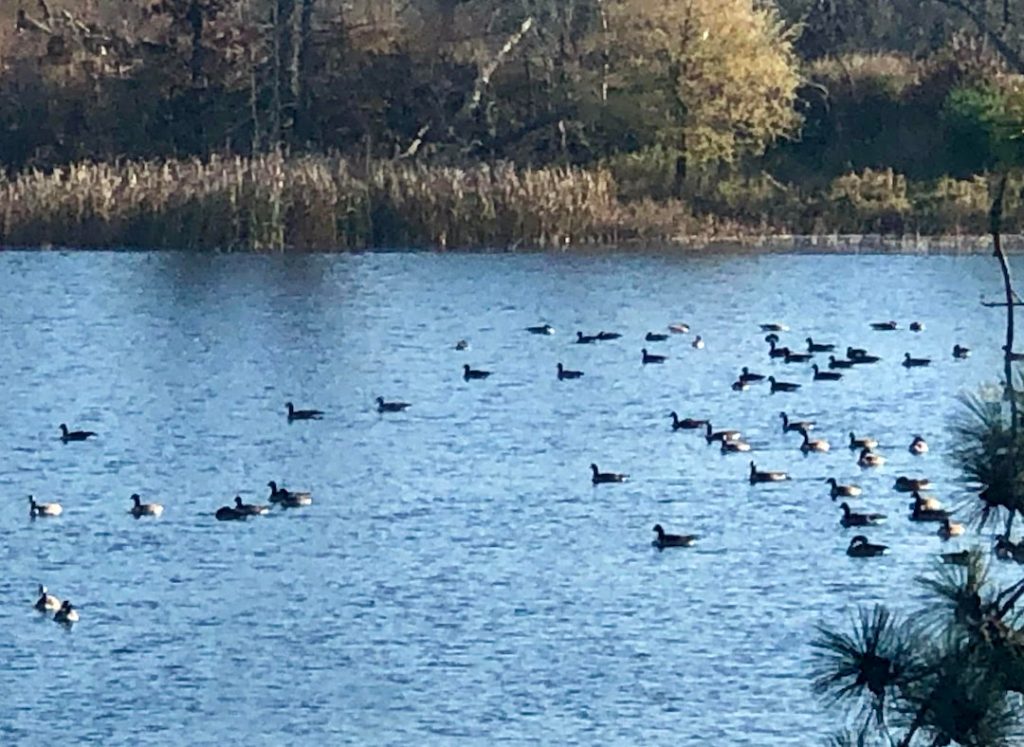
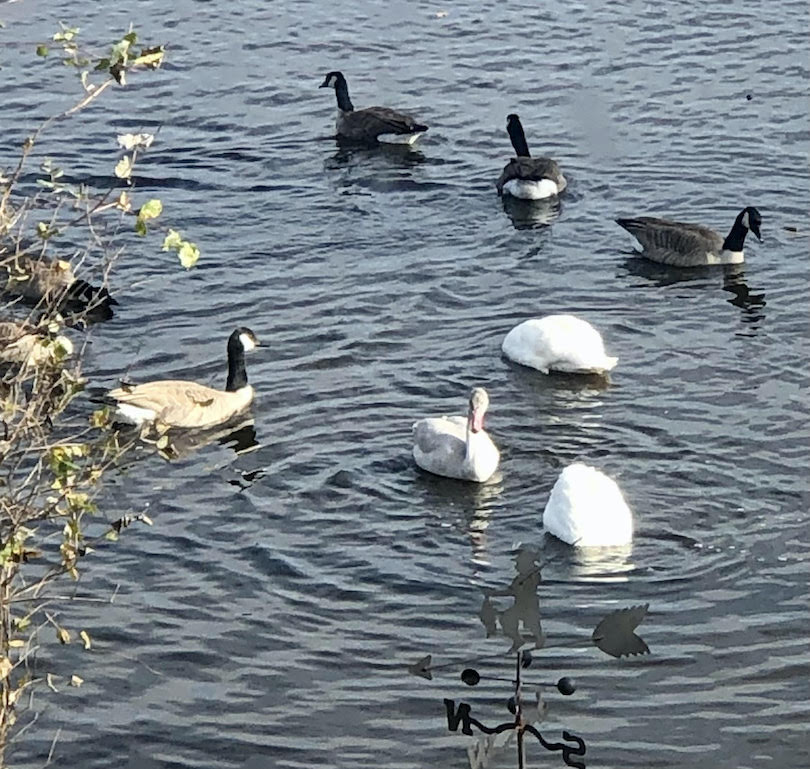
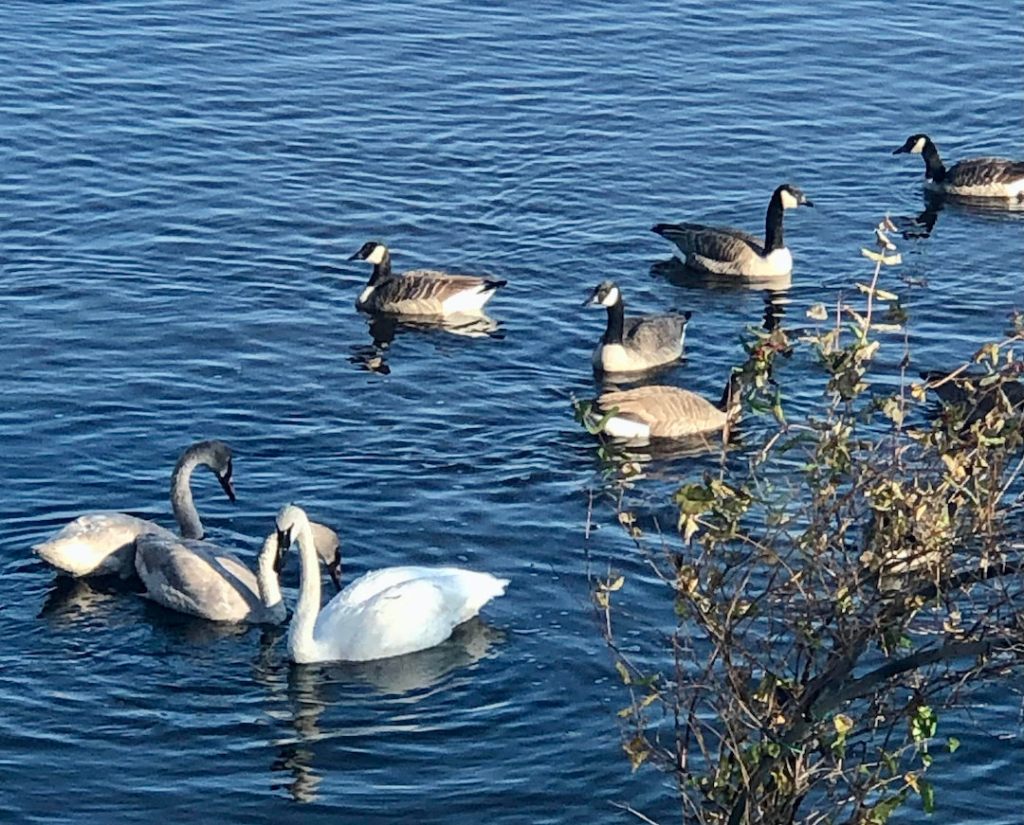
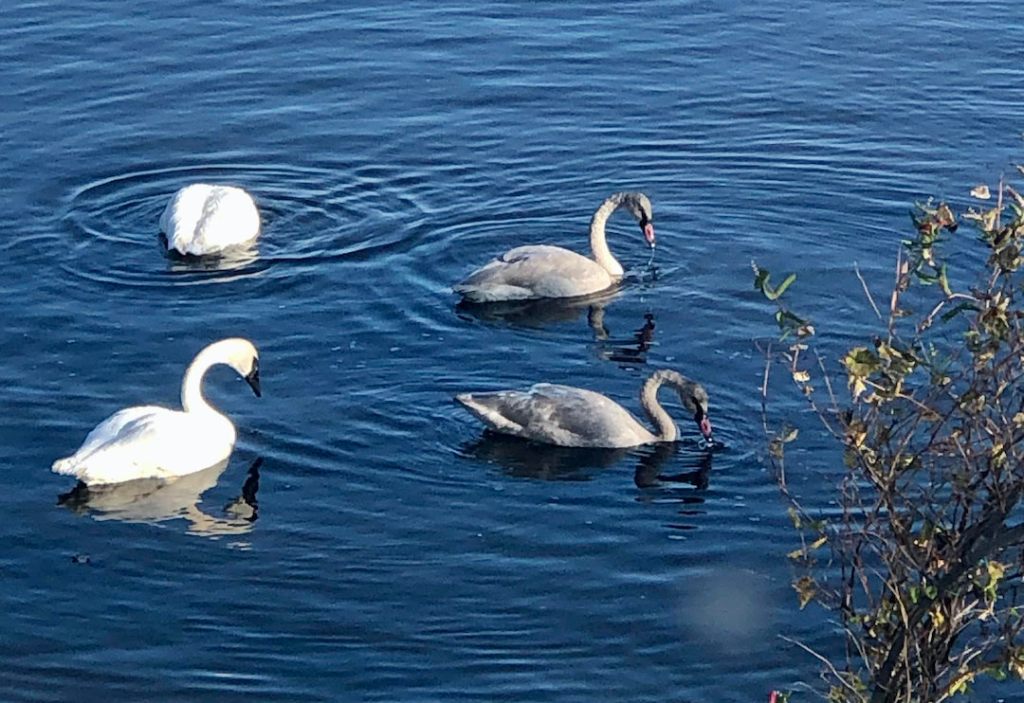
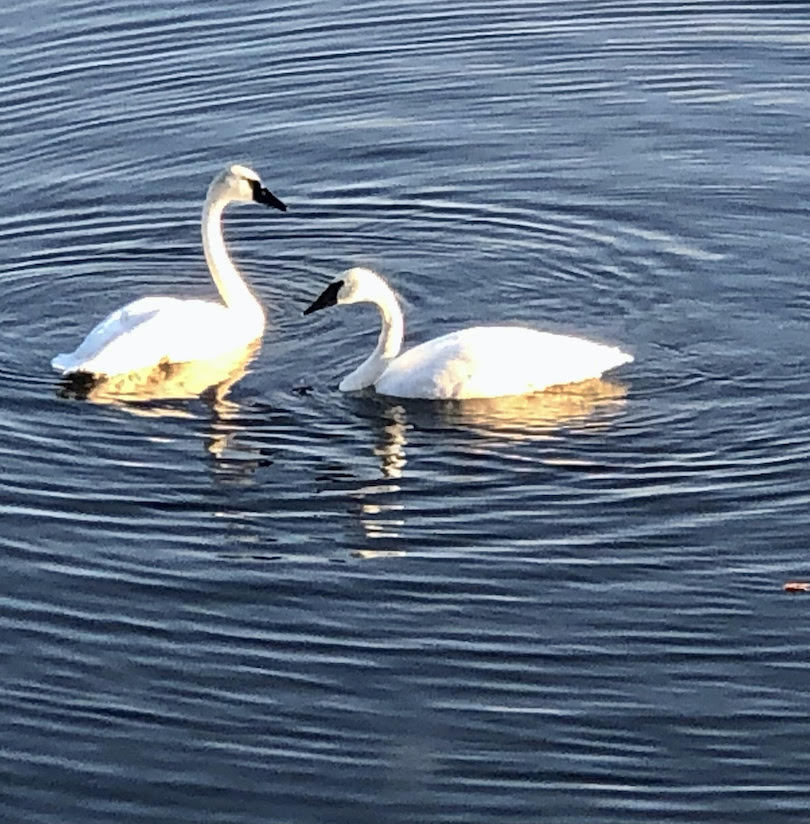
The camaraderie was disrupted by an argument between our trumpeter couple and another immigrant couple. The juveniles swam to the sidelines. “It’s definitely not a mating dance,” Jeff pronounced.
“No. But they are stretching their necks out straight toward the other,” I answer. “To show their superiority? The four adults swam toward an empty spot toward the middle of the lake. “They’re doing the neck dance now—shimmying. I’ve never seen that before!”
At the end of this show of displeasure, or whatever that was, the visiting couple flew off gradually—skimming the lake and then rising over the treetops—perhaps to locate a friendlier lake.
Jeff completed his packing and took off in his rental car. Remembering the incident, I plan to research fall/winter trumpeter swan behavior. (I’ve previously posted a blog about their behavior in the spring.) I know that these swans and geese will be forced to crowd closer together in the winter. We’ve observed this behavior on Fox Creek and the Apple River during a Winter Wonderland Christmas at Northern Bliss.
The Changing Face of White Ash Lake. One thing about living on a lake: it’s never boring. In addition to the wild geese howling, the colorful ducks quacking, and the trumpeter swans honking, I’ve been observing the changing face of the lake itself. An overnight frost left a frothy ring on the edges and ripples on the surface—as if all motion had suddenly been suspended. The next day, the lake froze solid, except for a small open spot where a few Canada geese landed and flew off again.
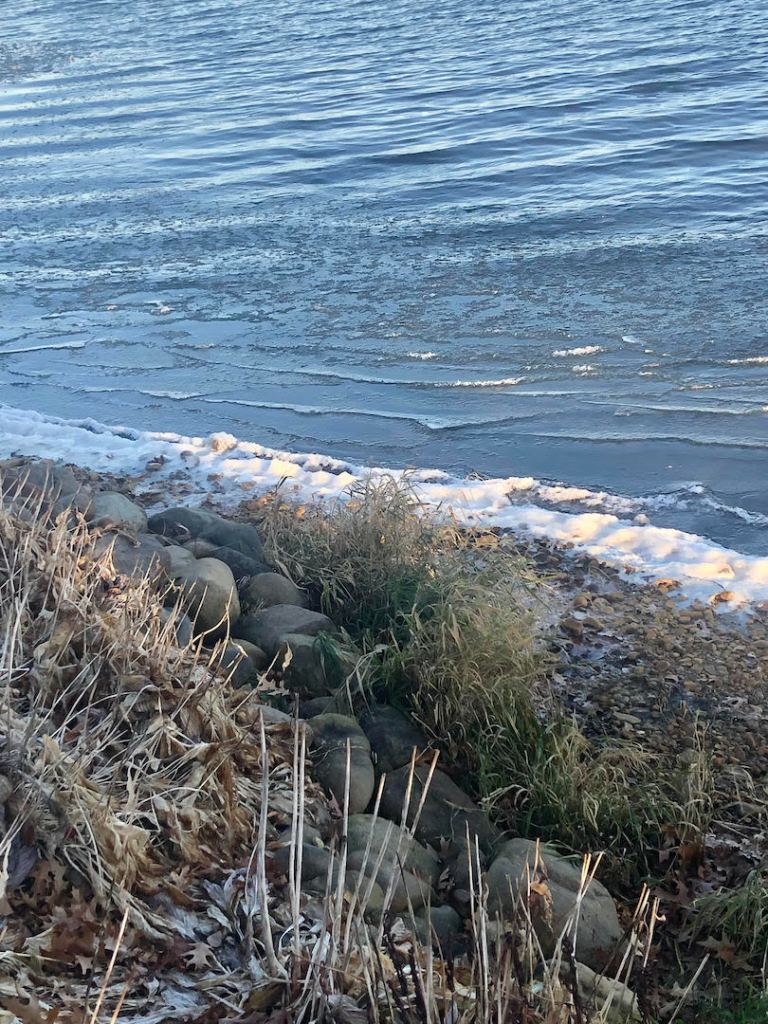
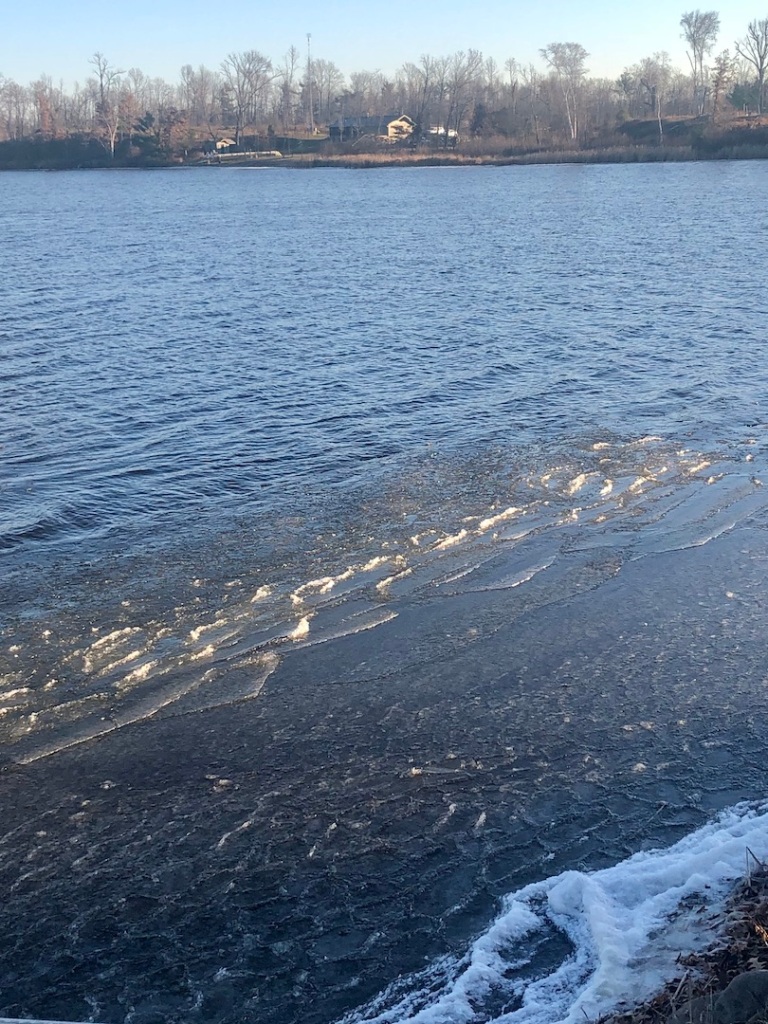
Then, the day after Thanksgiving, we awoke to a light coat of powder. Soft snow fell all day, gradually turning the lake into a pristine white world. A thin layer of powder covered everything—the rust-brown hydrangea globes we’d left in place for “winter interest,” the sprays of dormant mums, and the errant leaves left on the still-green grass. Expansive layers of white extended to the patio, sidewalk, and driveway and finally, to White Ash Lane itself, devoid of tire tracks. All was undisturbed, silent, peaceful. A picture postcard of serenity. Time stood still as I lingered on the porch and reflected on the wonderful family Thanksgiving that was. A moment of bliss.
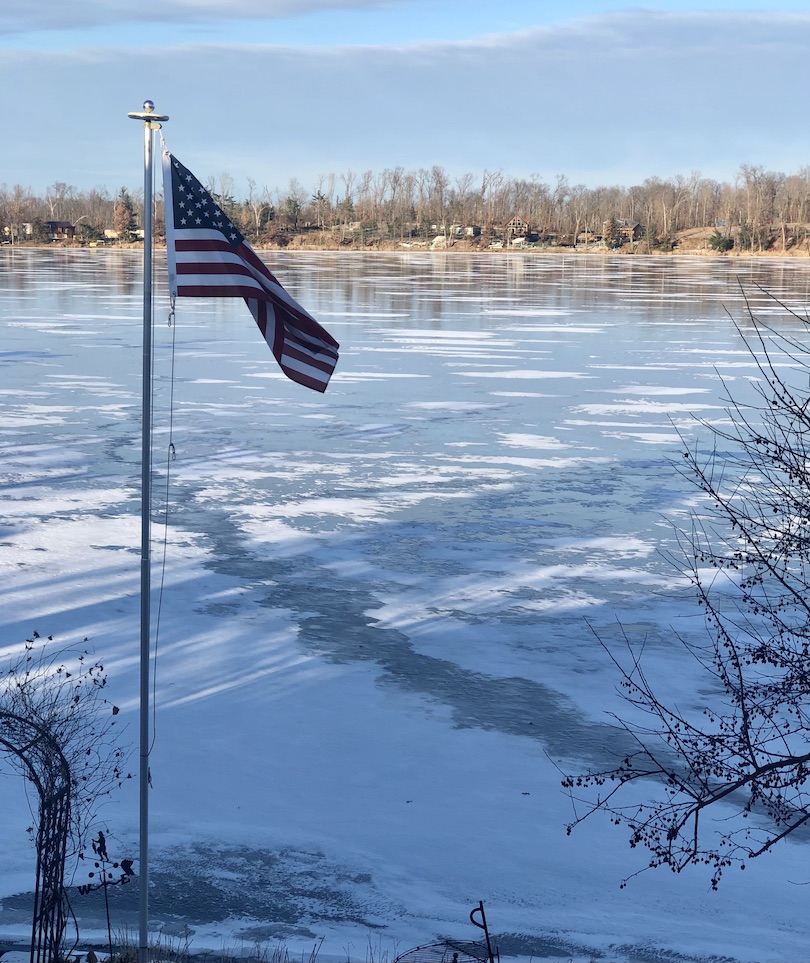
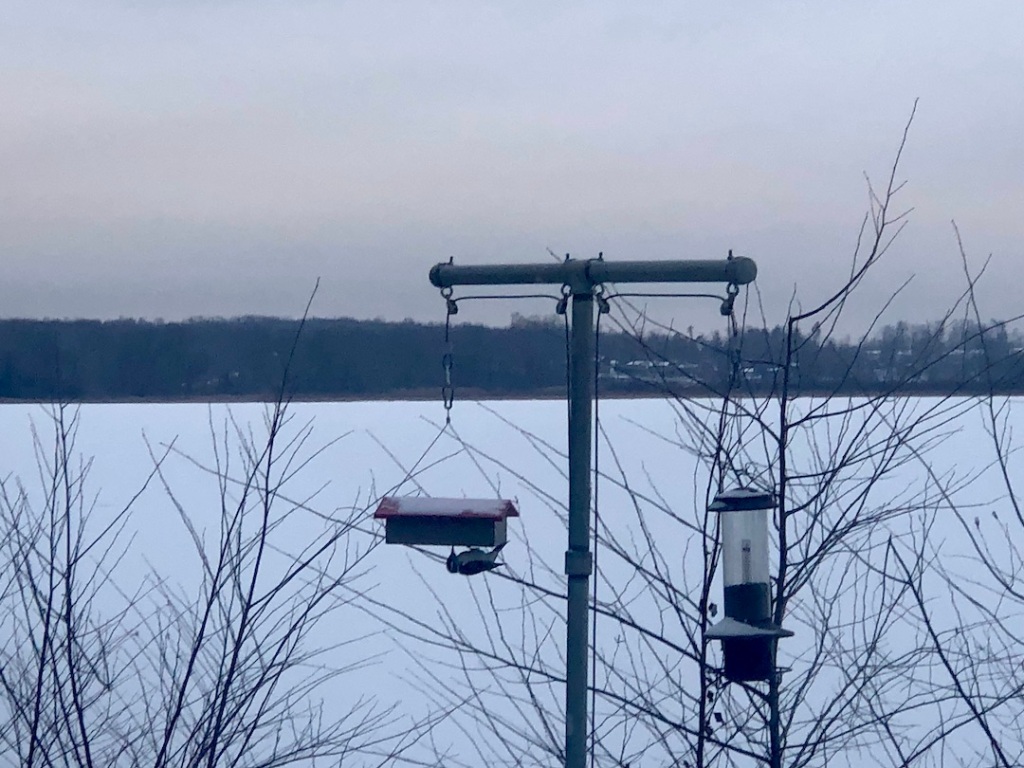
By Monday, the vista changed yet again. Some of the snow melted. For commuters, this meant returning to work through a world of gray slush. But here at the lake, I enjoyed a mosaic of white powder and gray snowmelt refrozen into intersecting drifts, creating an ikat pattern. Evidently a fierce wind had come up overnight. The thermometer registered 10° F, the coldest temperature we’d experienced so far. Autumn had indeed turned into winter. The large feathered flocks had flown south to more hospitable lakes or to open spots on the Apple River.
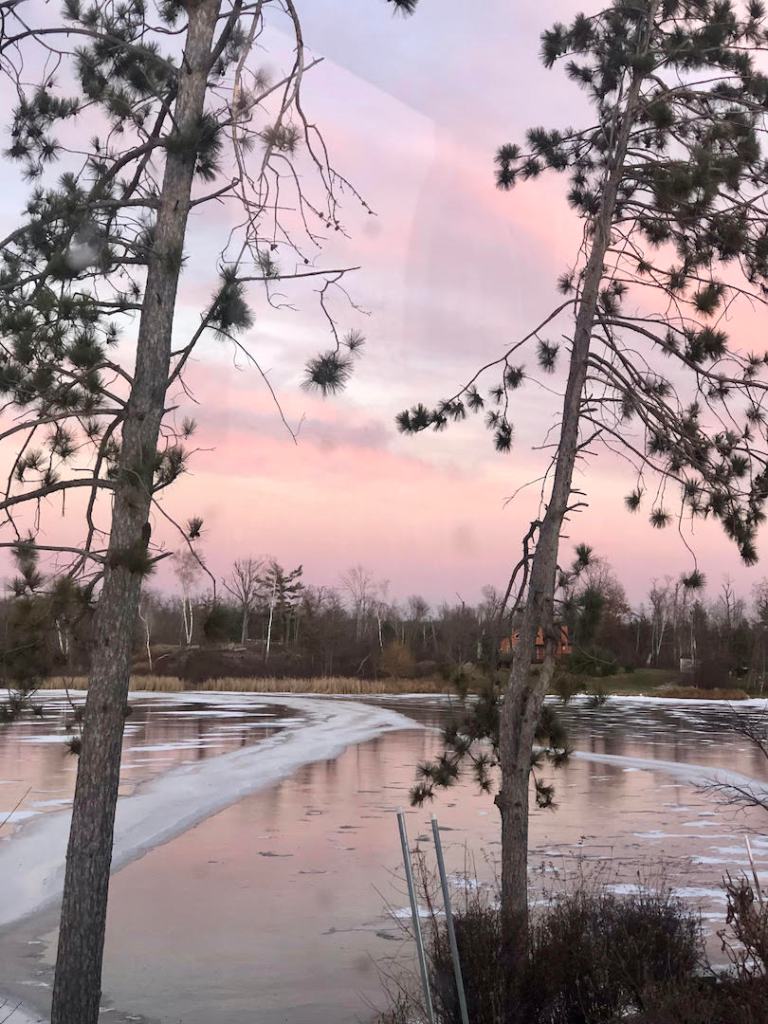
That night, a wondrous Full Beaver Moon rose from the southernmost section of South White Ash Lake. There it sat, suspended between the pine tree branches for a long time, it seemed, reflecting onto the shiny parts of the lake that the winds had swept clear. Images of this second-to-last full moon of 2023 were captured by photographers and moon enthusiasts across the globe.
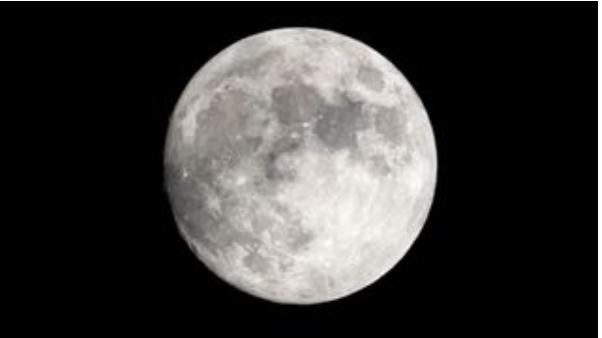
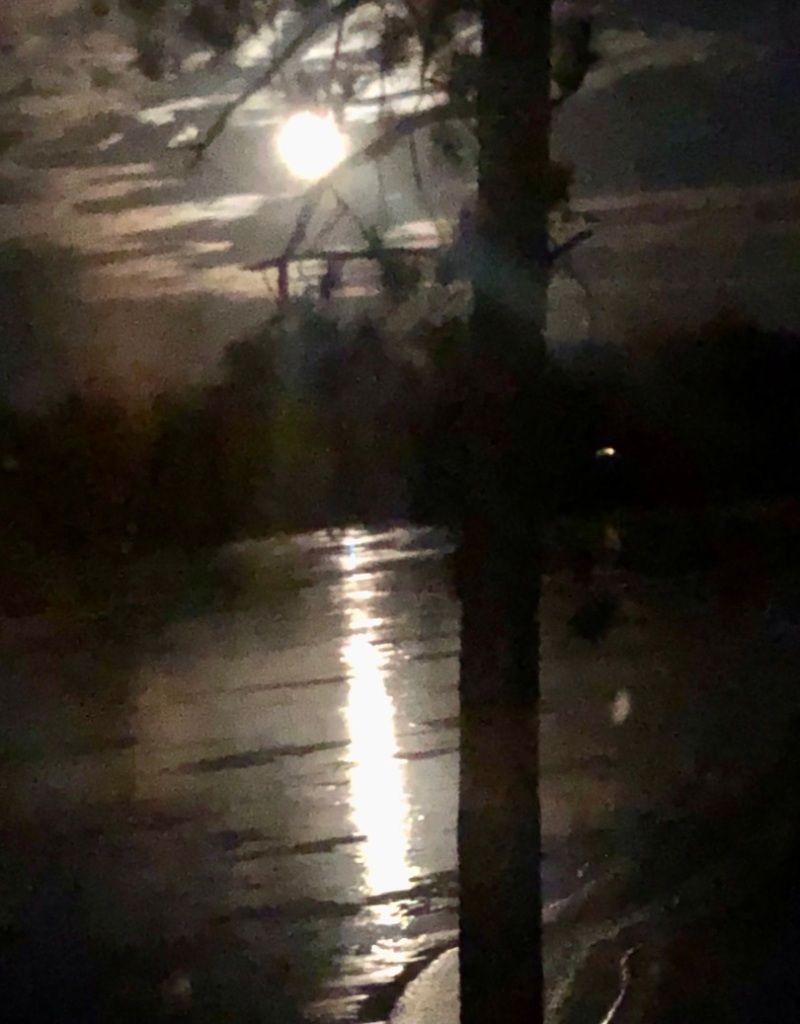
The Full Beaver Moon rises at the time of year when beavers are beginning to retreat to their dens for winter. It’s also the time of year when trappers hunted beavers for their thick winter pelt.
What a wonderful season to experience the holidays! We look forward to a white Christmas here with six of our Germany family flying to Northern Bliss. More is more. There’s no such thing as too much holiday joy.
About the Author: Lois and Günter Hofmann lived their dream by having a 43-foot ocean-going catamaran built for them in the south of France and sailing around the world. Learn more about their travel adventures by reading Lois’s award winning nautical adventure trilogy. Read more about Lois and her adventures at her website and stay in touch with Lois by liking her Facebook page. Lois’s books can be purchased from her website for a special holiday price through January 5, 2024.